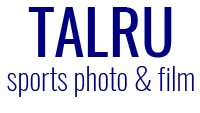It’s a question I needed an answer for when I started in football photography, and if you browse forums around the web, it’s still a question that is asked time and again. When starting out, what will I need in terms of football photography equipment?
My previous blog, Breaking in to Football Photography, discussed how I got my break in football photography, but also what equipment I started off with.
In the beginning, the camera I had suited me and allowed me to get to grips with the discipline, but as you become more adept at shooting and familiar with the conditions in which you shoot, you begin to get a feel for what capabilities you need in your gear.
Football photography equipment – which camera body do I need?
There are a lot of considerations when buying a camera for sports photography. I upgraded from my old Canon 400D in September of last year, jumping all the way up to the Canon 1D Mark IV. You have to consider what it is exactly that you need before making a decision on what to use.
My main considerations at the time were:
- Light – many of the games I was going to be shooting were at Prenton Park, where light levels across the pitch fluctuate and the wings are very dark. With a lot of night matches and wintery afternoons expected, I needed a body that could shoot high shutter speeds and frame rate while also having a high performing ISO range, reducing the noise on the shots when it would need cranking up.
- Weather sealing – while not a ‘must-have’, it was certainly desirable to me to have a body that was weather sealed for dealing with all of the weather conditions an English football season would throw at me.
- Print-quality images – The images I was producing would be used in printed matchday programmes, as well as online and in printed marketing collateral. They had to be of a high enough quality for them to be reproduced comfortably at large, printed sizes.
I narrowed my search down to two bodies initially, before being advised of the 1D Mk IV which turned out to be the pricier, but correct option for me.
Canon 7D versus Canon 5d Mk iii
The other options I considered were the Canon 5D Mk iii which is a full frame body and retails from new at over £1,000, and also the Canon 7D. While I was considering which to buy, Canon also announced the then-imminent release of the 7d Mk ii.
The 5D MK iii appealed to me thanks to its full frame and natively high ISO, both of which would make shooting in low light a lot easier. However, the drawbacks to this body – aside from the price – are the comparatively low frame rate of 6fps when compared alongside other models. Additionally, as I could not afford a lens longer than 200mm, the full frame would also lose me a little length, which was not helpful.
The 7D had an excellent frame rate, a whopping 8fps no less. It was also a lot cheaper and was compatible with a much cheaper range of lenses (EF-S). However, the ISO was only 6400 native.
So on one hand I had a camera that would perform brilliantly under low light, but perhaps not quite as quick as preferred, and with a slight loss of zoom length. On the other hand, I had a very quick camera that also came in cheaper and was designed for the keen sports shooter. However, under floodlights, it may struggle to produce the strength of image I needed.
Using the Canon 1D Mk IV for football photography
After posting on a forum, a couple of experienced shooters recommended upping my budget slightly and going for a Canon 1D MK IV. With a blistering frame rate of 10fps, a native ISO on a par with the 5D MK iii and a smaller sensor which allowed for a better crop factor on images, my mind was made up.
I did not have the budget to go for a brand new body though, and with the Mk IV discontinued anyway, the second hand market was my best hope. After a month or so of hunting for the best deal, I finally got hold of one, and I’d be lost without it.
On earlier blogs I’ve stressed the importance of getting to know what your camera is capable of and understanding why you may need to upgrade to better equipment. Well, having jumped from a 400D to the 1D, I sure noticed the difference and got the full benefit from doing this.
